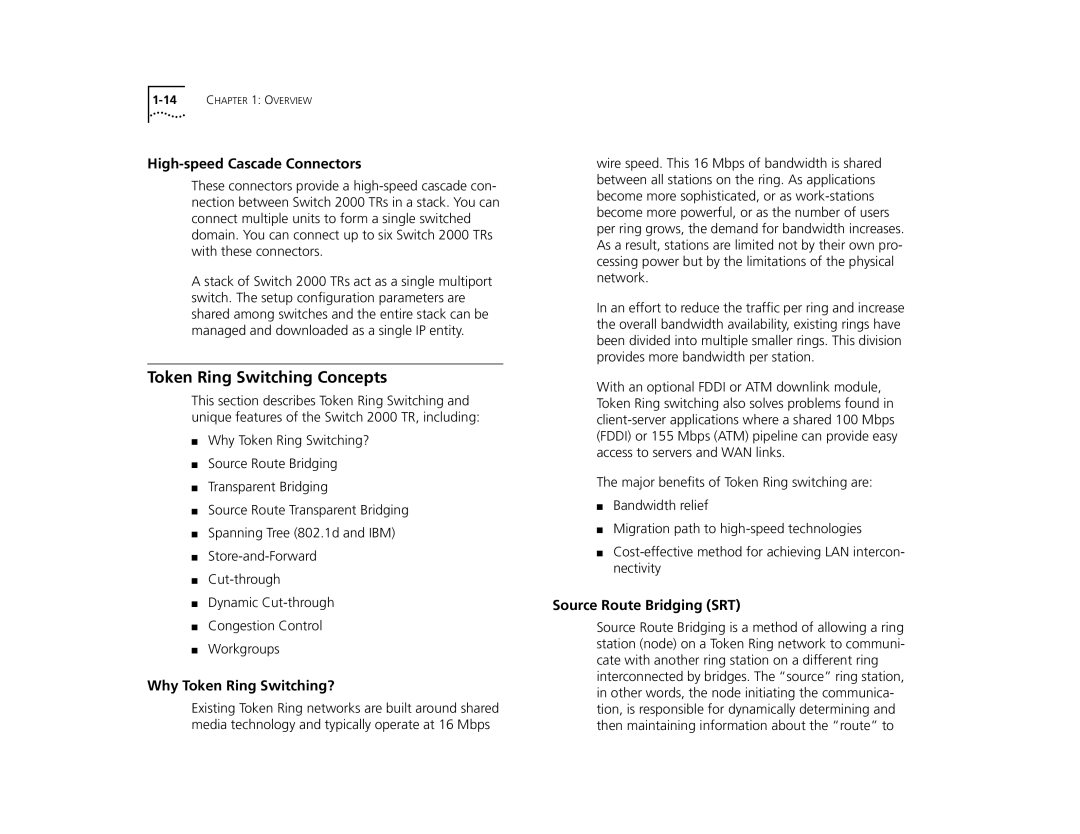
High-speed Cascade Connectors
These connectors provide a
A stack of Switch 2000 TRs act as a single multiport switch. The setup configuration parameters are shared among switches and the entire stack can be managed and downloaded as a single IP entity.
Token Ring Switching Concepts
This section describes Token Ring Switching and unique features of the Switch 2000 TR, including:
■Why Token Ring Switching?
■Source Route Bridging
■Transparent Bridging
■Source Route Transparent Bridging
■Spanning Tree (802.1d and IBM)
■
■
■Dynamic
■Congestion Control
■Workgroups
Why Token Ring Switching?
Existing Token Ring networks are built around shared media technology and typically operate at 16 Mbps
wire speed. This 16 Mbps of bandwidth is shared between all stations on the ring. As applications become more sophisticated, or as
In an effort to reduce the traffic per ring and increase the overall bandwidth availability, existing rings have been divided into multiple smaller rings. This division provides more bandwidth per station.
With an optional FDDI or ATM downlink module, Token Ring switching also solves problems found in
The major benefits of Token Ring switching are:
■Bandwidth relief
■Migration path to
■
Source Route Bridging (SRT)
Source Route Bridging is a method of allowing a ring station (node) on a Token Ring network to communi- cate with another ring station on a different ring interconnected by bridges. The “source” ring station, in other words, the node initiating the communica- tion, is responsible for dynamically determining and then maintaining information about the “route” to
